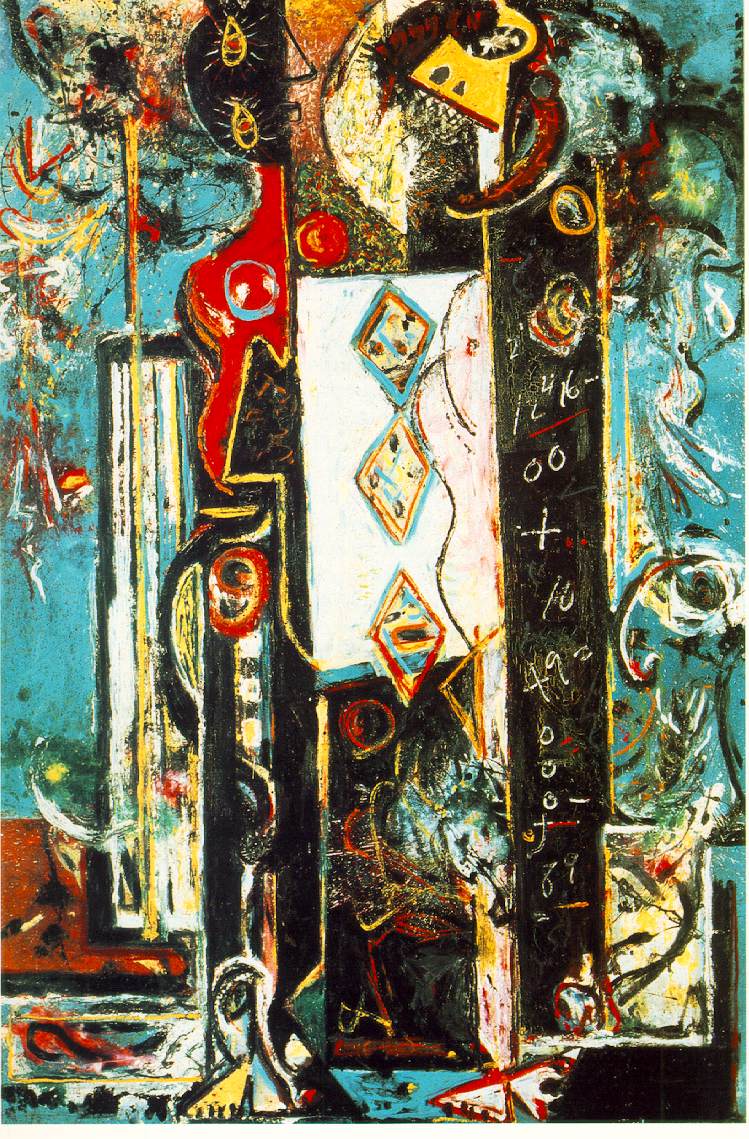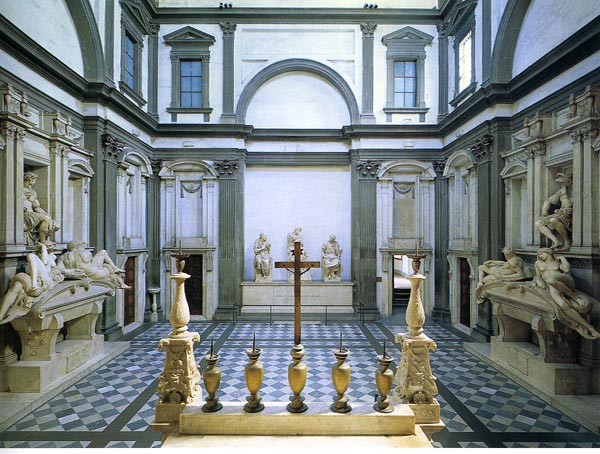To: Republicanprofessor
OK! I'll put my two cents in. I could just blow this off as meaningless splatters of paint or the use of imperfectly applied masking tape . . . but you are taking it seriously, so I will try to also.
You have approached this from something of a historical perspective, citing Jung and other explorers of the "collective unconscious." To that extent, I AGREE with you -- but with a twist.
Most of these works are examples of the collective unconscious . . . but it's yours (and mine), not theirs. Human beings desperately want order, and reason, and explanation, and pattern. Otherwise we despair.
We see the random patterns or the minimal lines and we wish to impose order and explanation on them. Those who are in the field, so to speak, develop elaborate explanations to bring order out of chaos and meaning out of meaninglessness. But the artist is not creating the order or the explanation -- the viewer is. So if there's an artist here, it's the viewer or the professor, not the person who put the paint on the canvas. The closest analogy is perhaps Dr. Rorschach's ink blots -- where the blot is just a blot and the interpretation placed on it by the patient is indicative of his state of mind, not the state of mind of Dr. Rorschach . . .
I have heard art critics explain that this IS art . . . that the artist is providing a valuable service in giving the viewer something to exercise HIS interpretive talents on. But of course what that means in the final analysis is that the artist is NOT interpreting, explaining, or really creating art in any traditional sense. Therefore he is not doing his job.
I wonder if the high rate of tragic deaths and suicides among these painters had anything to do with the realization that their efforts were only a half a creature, so to speak?
4 posted on
08/22/2005 8:44:04 AM PDT by
AnAmericanMother
(. . . Ministrix of ye Chace (recess appointment), TTGC Ladies' Auxiliary . . .)
To: AnAmericanMother; Republicanprofessor
We see the random patterns or the minimal lines and we wish to impose order and explanation on them. Those who are in the field, so to speak, develop elaborate explanations to bring order out of chaos and meaning out of meaninglessness. But the artist is not creating the order or the explanation -- the viewer is. So if there's an artist here, it's the viewer or the professor, not the person who put the paint on the canvas. The closest analogy is perhaps Dr. Rorschach's ink blots -- where the blot is just a blot and the interpretation placed on it by the patient is indicative of his state of mind, not the state of mind of Dr. Rorschach . . . Well said.
5 posted on
08/22/2005 9:19:36 AM PDT by
Sloth
(History's greatest monsters: Hitler, Stalin, Mao & Durbin)
To: AnAmericanMother
I wonder if the high rate of tragic deaths and suicides among these painters had anything to do with the realization that their efforts were only a half a creature, so to speak? Now that is a great point. Perhaps they aspired to be great artists and saw that they (as evidenced by their works) fell woefully short and couldn't handle their failure.
7 posted on
08/22/2005 9:23:46 AM PDT by
John O
(God Save America (Please))
To: AnAmericanMother
Reply to your post #4. I do believe that it is often the critics and professors who come up with the content that I discussed above. But Pollock did do some works with mythic titles, as in the
Male and Female seen below, so I don't think the Jungian interpretation is far off the mark as far as he is concerned.

And I also agree that sometimes too much is written to give credence to what is ultimately empty work (and this is definitely true of much minimalism and postmodernism). But the content of Abstract Expressionism still rings true to me, and I believe all that I wrote (although, as I said, it took me some years to see things that way). Just because Pollock did not write about the use of line, planes, etc. doesn't mean that those ideas weren't important in his work. He was notoriously non-verbal.
As for elaborate interpretations of art, check out all the volumes that have been written about Michelangelo and Botticelli involving various levels of theory about their work, including neoplatonic interpretations of the Medici Chapel and Primavera. Many times the artists may not write (or even discuss) these ideas, but others see them, and I think that if artworks can be read on several levels, so much the better. 

Have you seen any Pollocks in person? The larger ones are quite energizing, and that's the only way to really see them. I don't think all his works are great, but One and the others of that ilk are awesome.
I knew I would get some disagreement from you. We can always continue this debate....ad infinitum. That's what makes FR such a fun place.
To: AnAmericanMother
A thoughtful post, but I'm a little unclear on what you're trying to say. Are you saying that because Pollack, Rothko, et al produced works which sometimes defy a single interpretation, that they are failing to perform one of the single-most important goals of the artist, that is, to offer meaning/order to chaos, thus their art is incomplete?
Perhaps that is true of some of their works some of the time, but I think it telling that Pollack, for example, was very specific on what portions of his paintings were 'up' and 'down' when he dealt with museums and private buyers, which wouldn't be true, I don't think, if he thought of his works as a kind of Rorschach test of the collective unconscious, where any interpretation is as valid as the next. Or Rothko. I've seen several Rothko paintings in person; the plate reproductions in books simply don't do justice to the man's mastery of color. I was awash in gold and yellow and red and orange, viewing the one I saw in Chicago many years ago. It was warm and invigorating and powerful and, well, big. One doesn't look at a painting like that; one experiences it.
I don't think they created meaningless swaths and blotches. What they did mattered, at least to me. As an artist, if I wanted to faithfully depict the real world, I'd buy a camera. Otherwise, I just keep doing what I'm doing. To each his own, I suppose.
FreeRepublic.com is powered by software copyright 2000-2008 John Robinson


